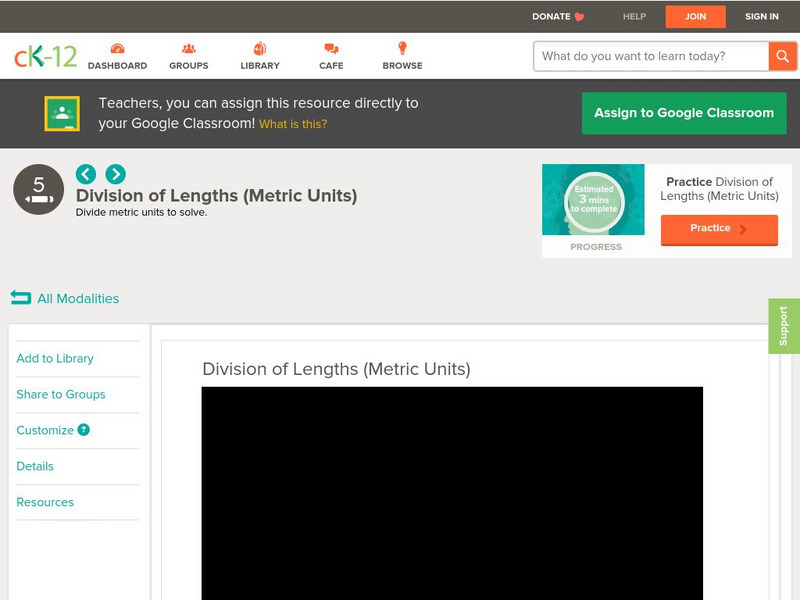Hi, what do you want to do?
Curated OER
Digging Detectives
Students demonstrate basic procedures for archeological excavations. They explore an archeological site, students using various archeological methods and techniques to determine some of the aspects of past life and culture.
Curated OER
Comparing Time Periods in U.S. History: The Ashford Project
Fifth graders use a "fact book" comparing periods in American history then students create a picture to illustrate their assigned periods. # # students use their pictures and concept maps to write expository paragraphs about their...
Curated OER
Grasping Geometry
Students investigate geometric shapes in their environment, make a geometric design, and write paragraphs describing the design.
Curated OER
Rockets on a Shoestring Budgut
Students work together to create rockets on a budget. They discover the limitations that real engineers face when designing and testing their products. They discuss their findings to complete the lesson.
Curated OER
Location, Location
Third graders draw and interpret simple scale maps, use maps to move around efficiently or plans to propose actions. They use of a compass to specify and find directions. They display and discuss a map of the local region.
Curated OER
The Garden
Pupils talk about the types of insects that you might see if you looked in the garden. They then brainstorm for ideas about how to solve the problem, sort objects into categories and display the results and count the objects in a...
Curated OER
A thousand seconds
Students use seconds, minutes, and hours. They then discuss the size of a thousand. After that they read time in digital or analogue form.
Curated OER
Garry The Greengrocer
Fourth graders are introduced to the problem by weighing objects on the balance scales. Use weights in both pans. (If you don't have access to scales use 2 containers and a child acting as the balance.) They then listen to the problem...
Curated OER
Ion Flow in Neurons
Student perform an experiment in which they determine the velocity of ion flow in an electrotonic potential and compare it to the velocity of action potentials. They record and analyze their results.
Curated OER
Mixing Colours
Young scholars explore ratios and their relationships to fractions. They explain the process of identifying ratios and describe their comparison. Students write ratios as fractions and by using colons. They convert the ratios to...
Curated OER
You say Avocado, I say Avogadro
Students convert mole to mass to particles and vice versa. In this chemistry instructional activity, students discuss the importance of Avogadro's number. They apply what they have learned in a team competition.
Curated OER
How Can You Study Things You Can’t See Like: Atoms?
Students simulate how scientists studied things they can't see like atoms. In this chemistry lesson, students predict what is inside the numbered obsertainers. They design a way to investigate what's inside without opening it.
Other
National Physical Laboratory: The History of Length Measurement
This resource provides historic information on length measurement in the United Kingdom. Click on the topics on the left toolbar of the article to find out more information.
CK-12 Foundation
Ck 12: Elem Math: Division of Lengths (Metric Units)
[Free Registration/Login may be required to access all resource tools.] For this learning module, students are asked to divide a total length, height, or perimeter into equal parts. Includes video demonstrating a sample problem [0:37]...
ibiblio
Ibiblio: How Many? A Dictionary of Units of Measurement
The Center for Mathematics and Science Education at the University of North Carolina at Chapel Hill provides an interesting and easy-to-use dictionary of the history and meaning of many measurement terms. Metric, International, and...
E-learning for Kids
E Learning for Kids: Math: Eiffel Tower: Time, Area and Measurement
Take a tour of the Eiffel Tower with Marie-Clare and measure its area. Read and interpret time and look at cross-sections of 3D figures.
CK-12 Foundation
Ck 12: Elem Math: Adding and Subtracting Lengths Metric Units
[Free Registration/Login may be required to access all resource tools.] Practice problems involving addition or subtraction of 3 measurements to solve for a specific length.
Cuemath
Cuemath: Metric System
Learn more about the metric system by taking a look at the common metric units along with some solved examples and a few practice questions to test your understanding.
CK-12 Foundation
Ck 12: Measurement: Appropriate Tools for Metric Measurement
[Free Registration/Login may be required to access all resource tools.] Choose appropriate metric measurement tools when finding various lengths.
ABCya
Ab Cya: Strolling With My Gnomies, a Measuring Game
Decide whether you want to measure in Standard or metric and at what level (i.e. inch, half inch or centimeter, millimeter) and begin practice. Computer will generate a line above the ruler and the player enters the length and checks for...
PBS
Pbs Mathline: It Takes Ten Lesson Plan [Pdf]
Students rotate from station to station completing activities involving measurement weight, length, and volume using metric measurement.
University of Houston
University of Houston: Measurement Teacher Activities: Length Lessons
This lesson plan offers an opportunity for students to learn to measure length by fractions of an inch, inches, feet, yards and also change one unit of length to another.
Primary Resources
Primary Resources: Measures
A huge collection of teacher resources to aide in the teaching of all types of metric measurement: length, distance, mass, weight, capacity, and volume. Activities include measuring, estimating, converting, investigating, and finding...
National Council of Teachers of Mathematics
The Math Forum: Intro to Measurement for Primary Students
This site from the Math Forum is a great introduction to measurement for primary students. Each measurement activity has four components: interactive, manipulative-based project; technology; paper/pencil practice; literature connection.



























